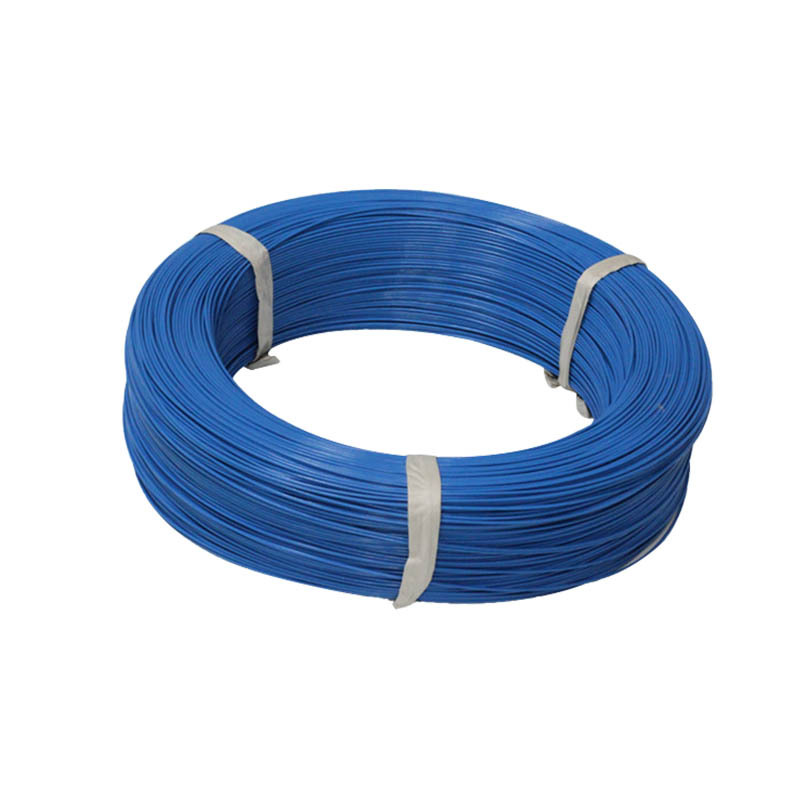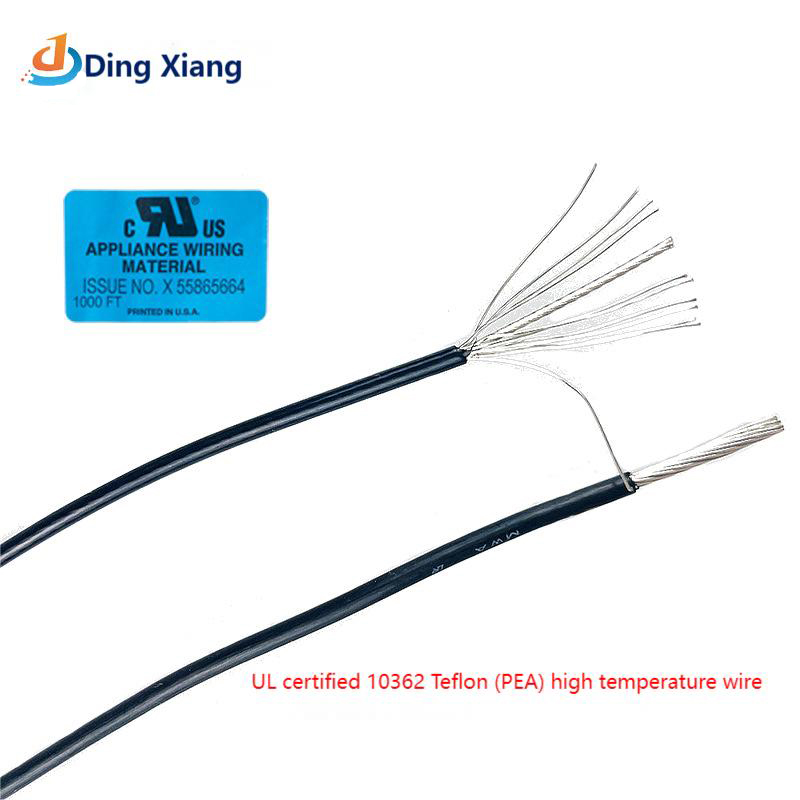Polytetrafluoroethylene has the characteristics of high temperature resistance, corrosion resistance, high insulation and excellent electrical properties, which makes it widely applicable. Therefore, wires insulated with polytetrafluoroethylene are a very good choice. It is widely used in various types of wiring in aerospace. Most of the wires in the US military standard MIL-W--22759 use this type of wire. Its outstanding advantage is that the temperature resistance level is as high as 250℃, and its mechanical strength and electrical properties will not be affected by long-term use at high and low temperatures. Secondly, due to the wide frequency range of polytetrafluoroethylene, it is often used as insulation for coaxial cables; there are also thermocouple wire insulation and H-class and F-class motor lead wires.
The raw material for making ALFA bellows is polytetrafluoroethylene (PTFE), which is a highly crystalline polymer. Its crystals will undergo volume mutations at the turning points of 19℃, 29℃ and 327℃. Therefore, the turning points of the two temperatures of 19℃ and 327℃ are very important for the processing of polytetrafluoroethylene. The crystal transition temperature of 19℃ is mainly important for processing blanks. When polytetrafluoroethylene is used to make a film or to push the insulation layer of the wire, there is a process of molding the polytetrafluoroethylene powdered resin. If the temperature is not well controlled, the lattice distance will become larger, making the preformed product hollow, and eventually causing cracks inside.


327℃ is the melting point of polytetrafluoroethylene. Strictly speaking, above this temperature, the crystalline structure disappears and turns into a transparent amorphous gel state, accompanied by a 25% increase in specific volume. This gel block has a high melt viscosity and still cannot flow at 360℃. This characteristic determines that polytetrafluoroethylene cannot be molded in the same way as general thermoplastic resins (such as melt extrusion), but is processed by a similar powder metallurgy method of combining pressurization and sintering. Due to the low thermal conductivity of polytetrafluoroethylene and the large volume change at temperatures above and below the melting point, the heating rate must be slow near the melting point during the sintering process to make the temperature inside and outside the product uniform: otherwise, stress will be caused inside the product, and even cracking in severe cases. The degree of crystallinity of polytetrafluoroethylene has a certain influence on the physical and mechanical properties of the wire. Generally, the higher the crystallinity, the higher the density of polytetrafluoroethylene, and the improved physical and mechanical properties, and vice versa. The crystallinity of polytetrafluoroethylene is related to the molecular weight and the cooling rate after sintering. At the same cooling rate, the smaller the molecular weight, the easier it is to crystallize and the higher the crystallization rate; under the same molecular weight, an extremely slow cooling rate is conducive to the recrystallization of macromolecules, so the crystallinity of the product is higher. It can reach up to about 73%. If it is cooled quickly, it can prevent the recrystallization of amorphous gel. The crystallinity is small, but even at the fastest cooling rate, its crystallinity is generally around 50%. Therefore, the cooling rate is different. The crystallinity of polytetrafluoroethylene after sintering is usually between 50% and 70%, and the maximum crystallization rate is within the temperature range of 310℃-315℃.
1. Physical properties PTFE is a tough, soft, inelastic material with moderate tensile strength and good low-temperature performance. When the temperature is as low as (-269℃), PTFE is still ductile under pressure.
2. Electrical properties of PTFE insulated wires PTFE has excellent electrical insulation properties over a wide range of temperature and frequency. Since the fluorine atoms in the PTFE molecular chain are symmetrical and evenly distributed, and there is no inherent dipole moment, the dielectric loss tangent tgδ and relative dielectric constant εr change very little within the power frequency range of 109HZ. From room temperature to 300℃, the actual tgδ value of PTFE changes very little, while εr decreases with increasing temperature.
3. Heat resistance PTFE has a fairly high heat resistance and low temperature resistance, and the long-term use temperature range is -200-+250℃. The heat resistance of PTFE is very high among existing engineering plastics. Although it begins to have trace amounts of decomposition products at 200°C, its decomposition rate is still very slow from 200'C to the melting point above 327"C, which is almost negligible; when the temperature rises to 400°C, the decomposition is significant, but the weight loss per hour is only about 0.01%. After thermal decomposition, the average molecular weight of polytetrafluoroethylene decreases, the crystallinity increases, and the tensile strength decreases. When heated at 300°C for one month, its tensile strength decreases by about 10%~20%; when heated at 260°C for a long time, its tensile strength remains basically unchanged. Therefore, from the perspective of thermal decomposition, polytetrafluoroethylene can be used for a short period of time at 300'C and for a long time at 260°C. From the perspective of thermal deformation, polytetrafluoroethylene can be used for a long time and continuously below 260°C when the load is not large; when the load is large, the thermal deformation is significant, and its use temperature is relatively reduced.
4. Electrical insulation PTFE is extremely stable to arc action, and its arc resistance is usually greater than 300s. This is because during high-voltage surface discharge, it will not cause a short circuit due to carbonization, but will only decompose into gas. Even if it is exposed to the open air for a long time and polluted by dust and rain, its insulation performance is not affected. However, due to the high electronegativity of fluorine atoms in PTFE, 1~2Ev electrons will cause it to dissociate and decompose, so its corona resistance is not good.


